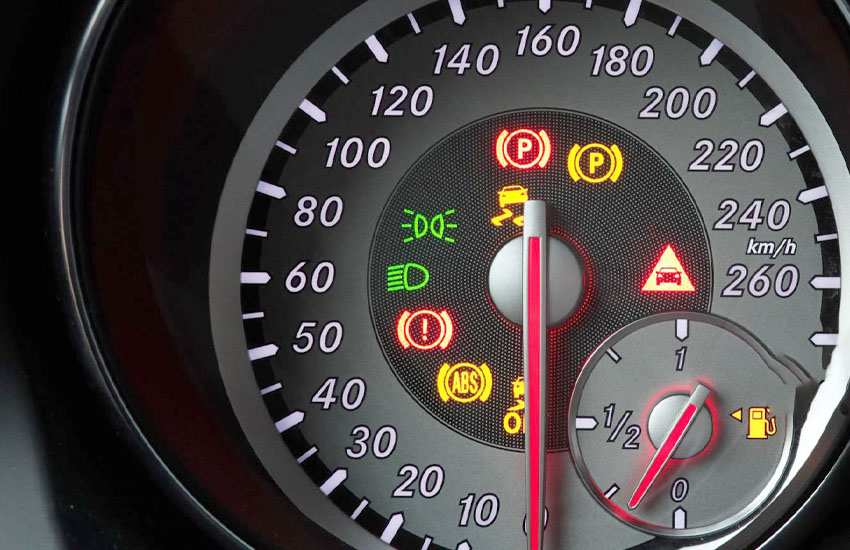Have you ever seen a little light on your car’s dashboard that says ‘ABS’? It might make you wonder: what does it mean, and could it cause my car to fail an inspection? Don’t worry! In this article, we’ll explore everything you need to know about the ABS light and whether it could affect your car’s inspection.
First things first, let’s talk about what the ABS light actually is. The ABS stands for ‘Anti-Lock Braking System.’ It’s a special safety feature in your car that helps you stop more safely, especially in slippery conditions like rain or snow. When the ABS light comes on, it means there might be a problem with this important system.
But here’s the big question: if that little ABS light is shining, could it mean your car won’t pass its inspection? It’s a common concern for many car owners. Inspections are important to make sure your car is safe to drive on the road. So, it’s natural to wonder if a warning light like ABS could cause trouble.

Understanding ABS Light
When you drive your car, sometimes a light might come on the dashboard. One of these lights is called the ABS light. ABS stands for Anti-Lock Braking System. It’s there to help keep you safe when you’re driving and need to brake.
So, what does it mean when the ABS light comes on? Well, it could mean a few different things. One reason is that there might be a problem with the ABS system itself. Maybe a sensor that helps the ABS work isn’t working right. Or there could be an issue with the wiring that connects the ABS system to the car’s computer.
Another reason the ABS light might come on is if there’s a problem with the brakes. Maybe the brake fluid is low, or there’s a leak somewhere in the brake system. If this happens, it’s really important to get it checked out because brakes are super important for stopping your car safely.
If you see the ABS light come on, the first thing to do is stay calm. Your regular brakes should still work, but the ABS might not. It’s a good idea to drive carefully and get to a safe place to stop if you can.
Once you’re stopped, you can check a few things yourself if you feel comfortable doing so. You can look at the brake fluid level to see if it’s low, and you can visually inspect the brake lines to see if there are any obvious leaks.
But, if you’re not sure what to do or if you’re worried about your safety, it’s best to call for help. A mechanic can take a closer look at your car and figure out what’s going on with the ABS system or the brakes.
Remember, it’s always better to be safe than sorry when it comes to car problems, especially when it involves something as important as brakes. So, if you see that ABS light come on, don’t ignore it!
Effects On Vehicle Operation
The ABS light being on may result in a car failing an inspection, as it indicates a potential issue with the anti-lock braking system. This could affect vehicle operation, leading to compromised safety and performance on the road. It’s important to address this warning light promptly to ensure the proper functioning of the vehicle.
How ABS Light Impacts Braking
When driving, a well-functioning braking system is crucial for your safety and that of others on the road. The ABS (Anti-lock Braking System) is an important component of your vehicle’s braking system. If you notice the ABS light is illuminated on your dashboard, it could indicate a potential issue with your ABS.
When the ABS light is on, it means there is a problem with the system, which can have various effects on your vehicle’s braking performance. One of the main impacts is that the ABS may not function properly or may even be completely disabled. This means that in the event of emergency braking or sudden stops, your wheels might lock up, resulting in a loss of control and increased stopping distance.
Driving Safety Concerns
The safety implications of a malfunctioning ABS light are significant. Without the proper functioning of the ABS, you may experience difficulties in maintaining control of your vehicle during sudden stops or when braking on slippery surfaces. This can increase the risk of accidents, especially in situations where you need to swiftly navigate around obstacles or during inclement weather conditions.
Additionally, a malfunctioning ABS could lead to uneven braking between the wheels, causing your vehicle to pull to one side. This imbalance can result in decreased stability, making it harder to steer accurately and maintain control of your vehicle on the road.
Addressing The Issue
If you fail a car inspection due to an illuminated ABS light, it is essential to promptly address the issue before continuing to drive your vehicle. First, you should consult your vehicle’s owner’s manual to understand the potential causes of the ABS light coming on. In some cases, it may be a simple fix such as a loose or damaged sensor, while in others, more extensive repairs may be required.
To resolve the issue with the ABS light, it is strongly recommended to take your vehicle to a reputable mechanic or automotive service center. They will have the necessary expertise and diagnostic tools to accurately identify the underlying problem and perform the appropriate repairs. Always remember that a well-functioning ABS is paramount for your safety and the safety of others on the road.
ABS Light And Inspections
When it comes to passing a car inspection, the ABS light is an important factor to consider. Understanding how the ABS light affects a car inspection can help you ensure that your vehicle meets the necessary standards. This section will focus on the role of the ABS light in car inspections and the common inspection criteria related to it.
Abs Light As Inspection Criteria
The ABS light is a vital component in car inspections, as it signifies the condition of the anti-lock braking system. When the ABS light is illuminated, it indicates a potential issue with the braking system that could compromise the vehicle’s safety and performance.
Therefore, during an inspection, a lit ABS light can lead to the vehicle failing to meet the required standards. It’s crucial to address any ABS light issues before taking your car for an inspection to ensure compliance.
Common Inspection Standards
Inspections typically focus on ensuring the safe operation of a vehicle. When it comes to the ABS light, inspectors will check for any warning lights on the dashboard. If the ABS light is on, it could indicate a malfunction in the braking system, leading to a failed inspection. It’s important to address ABS light concerns promptly to avoid potential issues during the inspection process.
Consequences Of Failing Inspection
When your car’s ABS light is on, it could potentially result in a failed inspection. The consequences of failing a car inspection due to the ABS light being on can be serious, leading to legal implications and costly repairs.
Legal Implications
Failing a car inspection due to the ABS light being on can result in legal ramifications. In some states, it may be illegal to drive a vehicle with a malfunctioning ABS system. This could lead to fines or even the suspension of your vehicle’s registration.
Cost Of Repairs
Repairing the ABS system to pass inspection can result in significant costs. Depending on the exact issue causing the ABS light to illuminate, the repairs could involve anything from sensor replacements to the entire ABS module. The expenses associated with such repairs could be a heavy financial burden for car owners.
Addressing The Abs Light
The ABS (Anti-lock Braking System) light is an important warning indicator in your car that plays a crucial role in maintaining your safety on the road. If this light turns on, it signifies an issue with your vehicle’s ABS system, which could potentially affect your ability to stop safely in emergency situations. As a result, it’s crucial to address the ABS light promptly and ensure that your vehicle is operating in optimal condition.
Diagnostic Steps
When faced with an ABS light illuminated on your vehicle’s dashboard during a car inspection, it’s essential to follow a series of diagnostic steps to identify the root cause of the problem. By taking these steps, you can determine the severity of the issue and have a better understanding of the necessary repairs. Here’s an overview of the diagnostic steps you can take:
- Check for loose or damaged ABS system connections.
- Inspect the brake fluid level and quality.
- Examine the condition of the wheel sensors.
- Ensure the ABS pump motor is functioning correctly.
By going through these diagnostic steps, you can pinpoint the specific area causing the ABS light to illuminate. Whether it’s a loose connection, faulty sensor, or any other issue, understanding the problem will help you determine the appropriate repair options.
Repair Options
Once you have identified the source of the ABS light issue, you can explore the various repair options available to you. The right course of action will depend on the nature and severity of the problem. Here are a few common repair options to consider:
- Reconnect or repair loose or damaged ABS system connections.
- Replace faulty wheel sensors to restore accurate data transmission.
- Address issues with the brake fluid level or quality, such as bleeding and replacing it if necessary.
- Repair or replace the ABS pump motor if it’s found to be malfunctioning.
It’s important to note that the repair options will vary based on the specific problem identified in the diagnostic steps. Consulting with a qualified technician or mechanic is crucial for accurate assessment and guidance on the most appropriate repair solution for your vehicle.
Preventive Measures
Preventing problems with your car’s ABS system and brakes is really important for staying safe on the road. Here are some easy things you can do:
- Regular Maintenance: Make sure to stick to your car’s maintenance schedule. This includes things like changing the brake fluid and checking the brake pads regularly.
- Keep an Eye on Fluid Levels: Check your brake fluid regularly to make sure it’s at the right level. If it’s low, it could mean there’s a leak in the system.
- Drive Safely: Avoid slamming on the brakes or driving too fast, especially in bad weather. This can help prevent wear and tear on your brakes and ABS system.
- Avoid Hard Stops: When you need to stop, try to do it gently instead of slamming on the brakes. This can help prevent unnecessary wear on the brake pads and other parts of the braking system.
- Pay Attention to Warning Lights: If you see the ABS light or any other warning lights come on, don’t ignore them. Get them checked out as soon as possible to prevent any potential problems from getting worse.
- Regular Inspections: Take your car to a mechanic for regular inspections. They can check the brakes and ABS system for any signs of wear or damage and fix them before they become bigger problems.
By taking these simple preventive measures, you can help keep your car’s ABS system and brakes in good shape, which will help keep you safe on the road.
Expert Insights
When it comes to getting your car inspected, the ABS light is a crucial factor that could determine whether your vehicle passes or fails. Let’s dive into the expert insights to understand how the ABS light can impact your inspection results.
Mechanic’s Perspective
Mechanics emphasize the importance of addressing ABS light issues promptly to ensure optimal safety. They suggest checking the ABS system for any malfunctions prior to the inspection. If the ABS light is on, it could indicate potential brake system problems and lead to a failed inspection.
Insurance Viewpoint
From an insurance perspective, a malfunctioning ABS system can pose a higher risk of accidents. Insurance companies may consider a vehicle with a faulty ABS system as a liability and may affect your coverage. Therefore, resolving ABS light issues before an inspection is advised to maintain insurance compliance.
Conclusion
To summarize, it is essential to address any issues with the ABS light before taking your car for inspection. The ABS light being on can indicate a malfunction in the system that may affect the car’s overall safety and performance.
By promptly resolving this issue, you not only ensure your vehicle’s compliance with inspection standards but also prioritize your own safety on the road. Remember, addressing the ABS light is a small step that can have a significant impact on the well-being of both you and your car.


